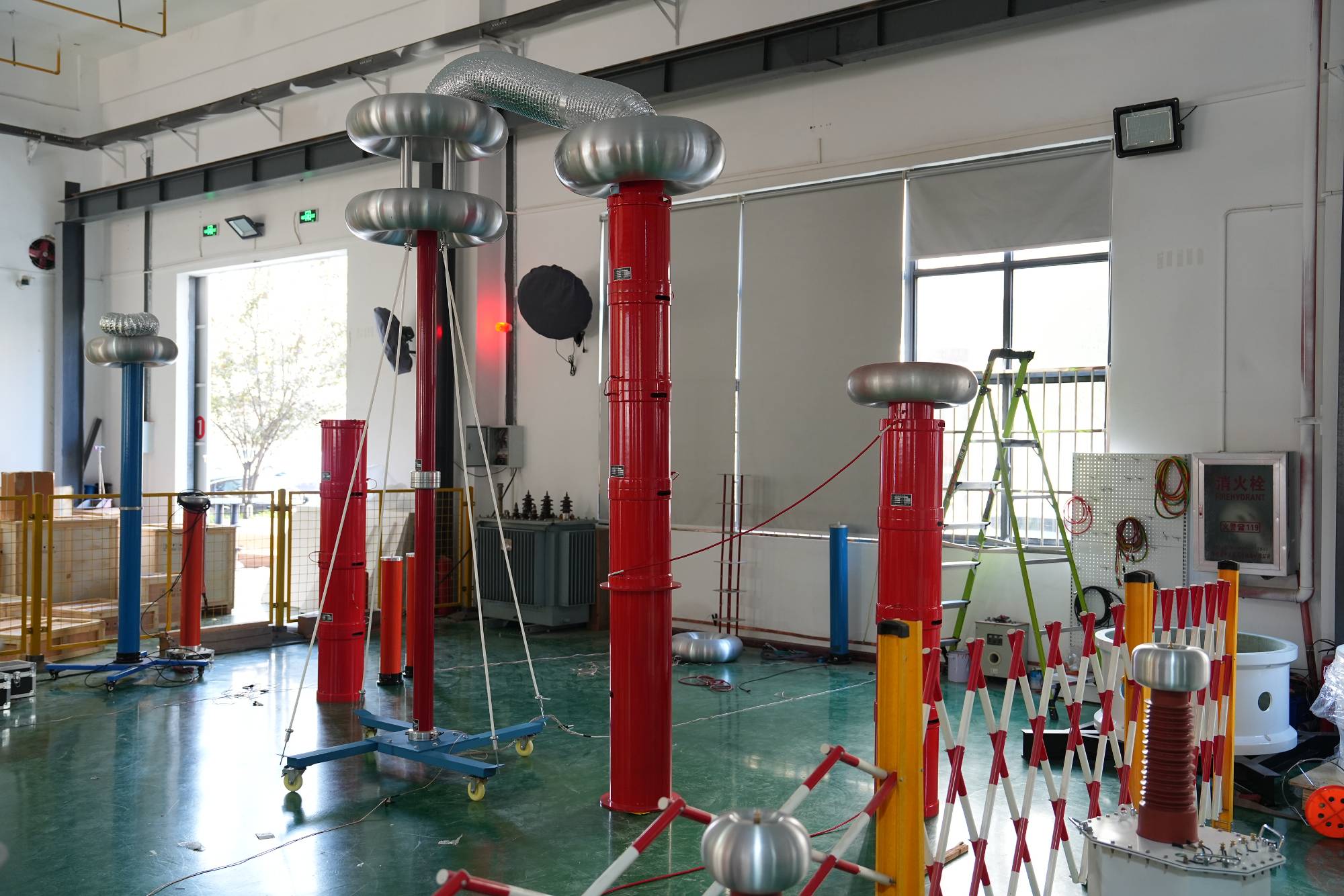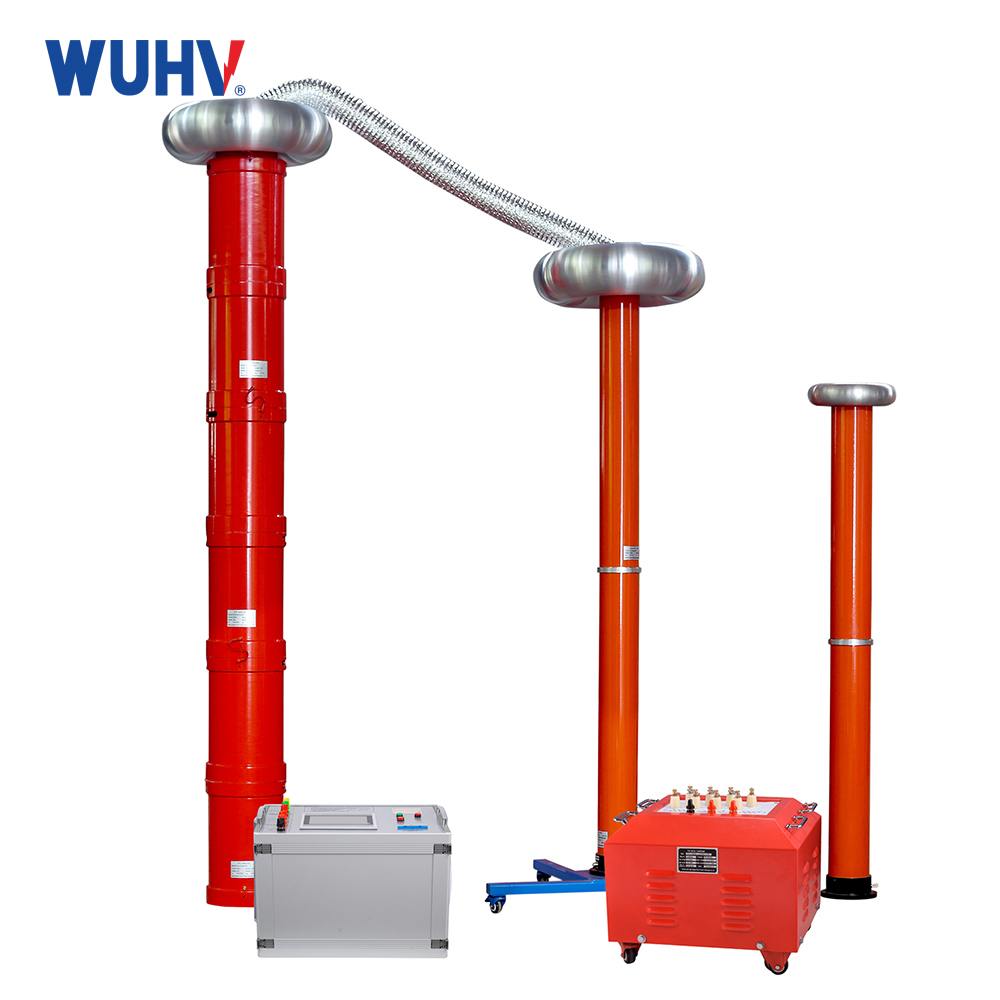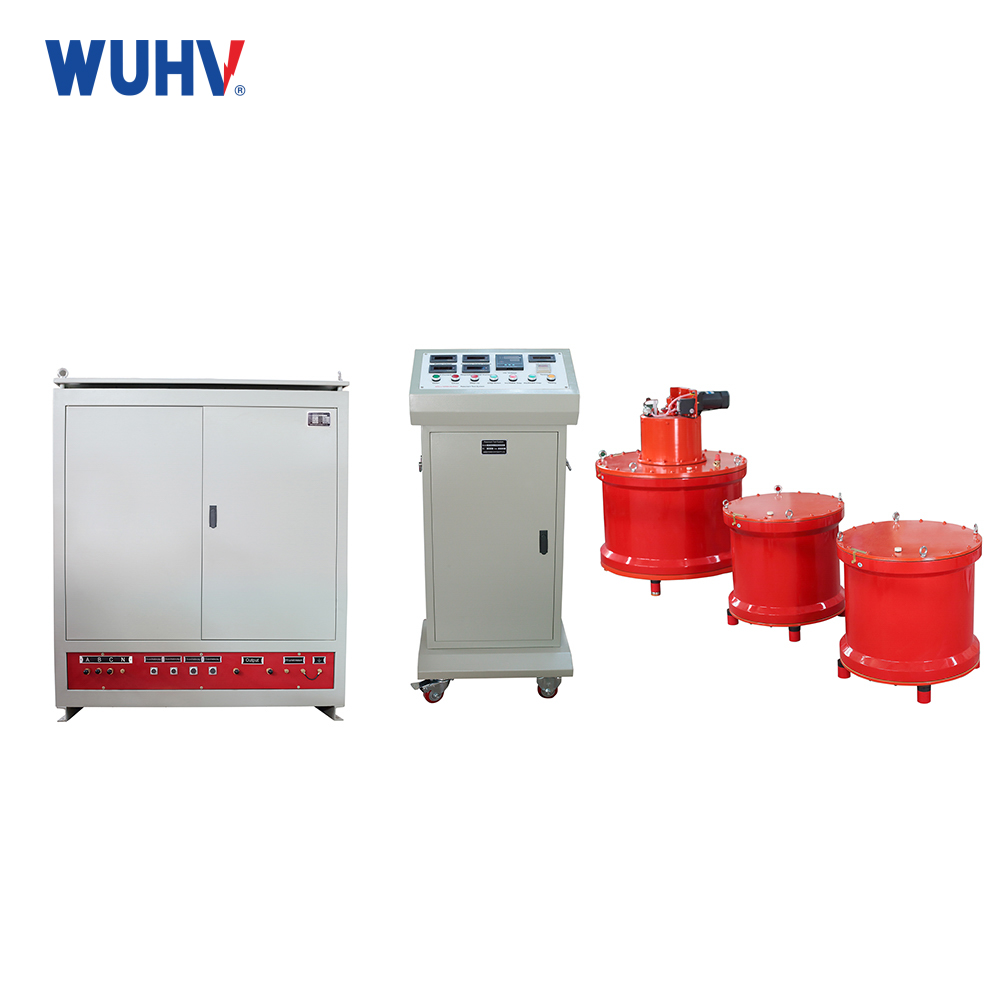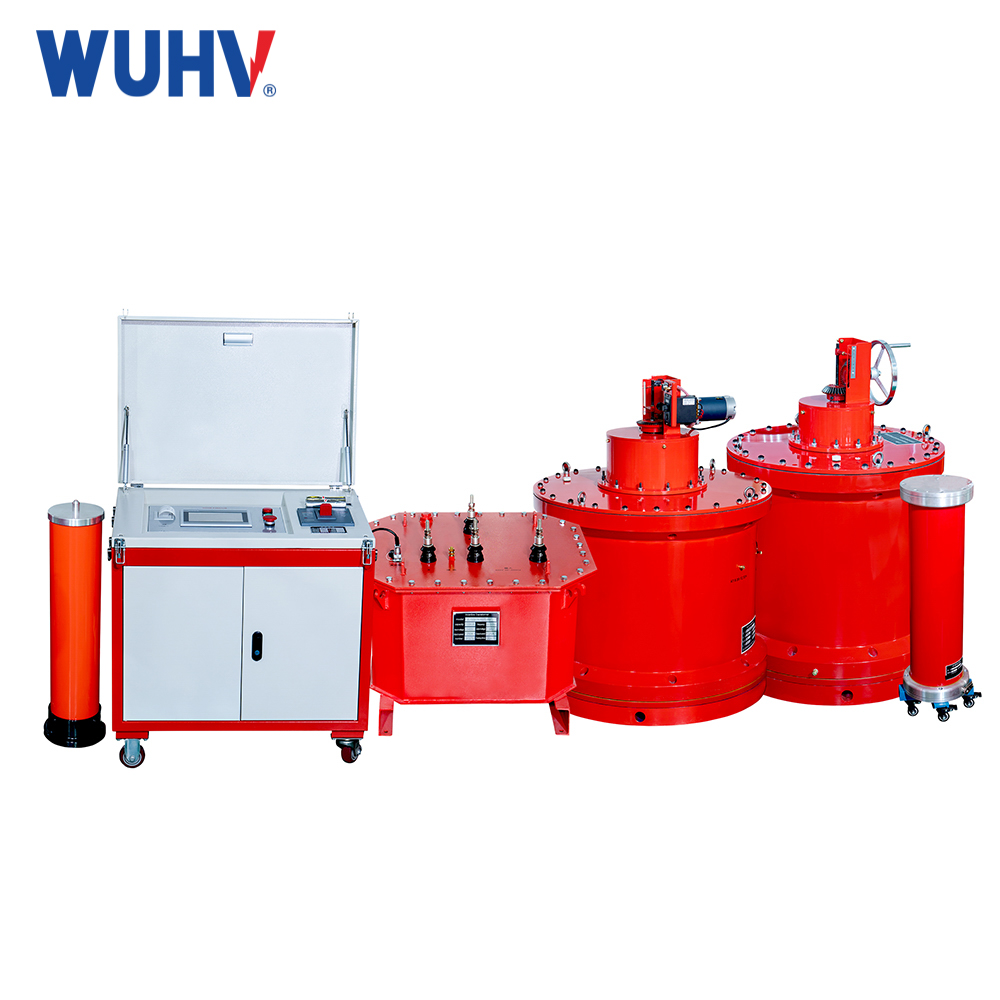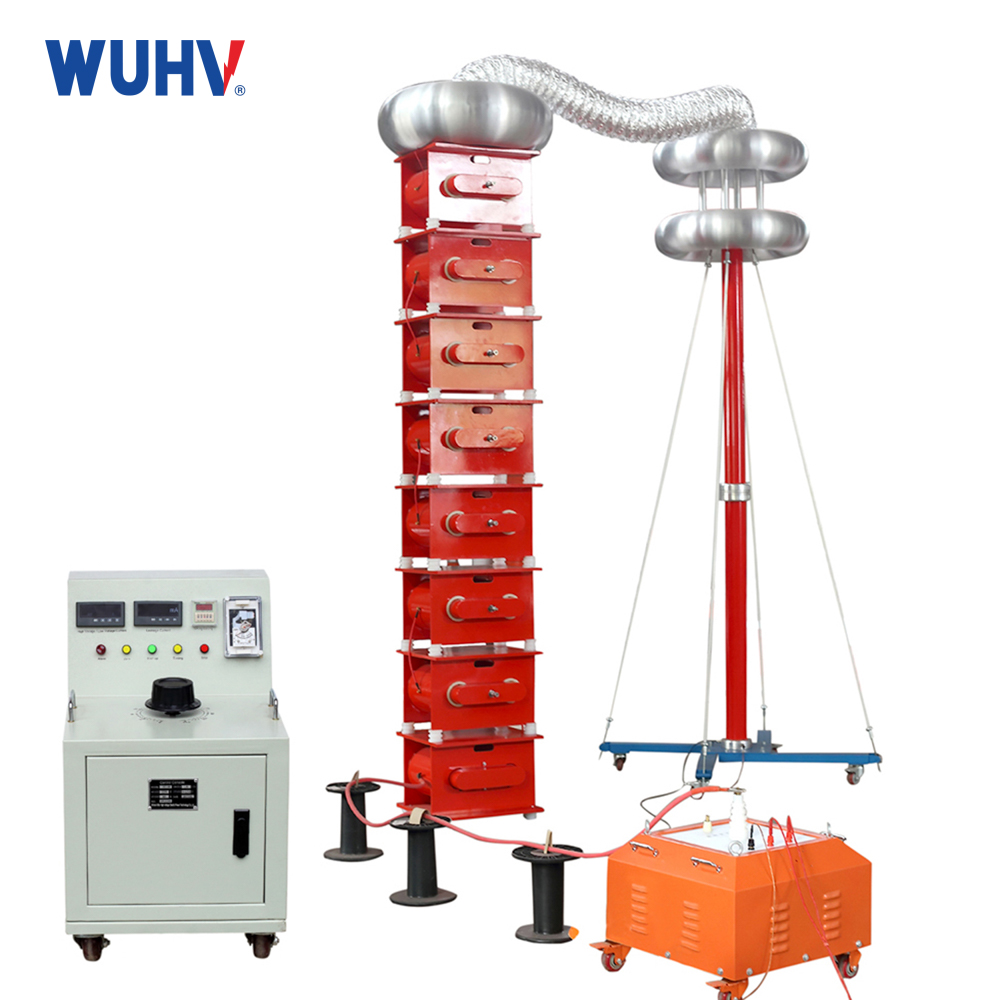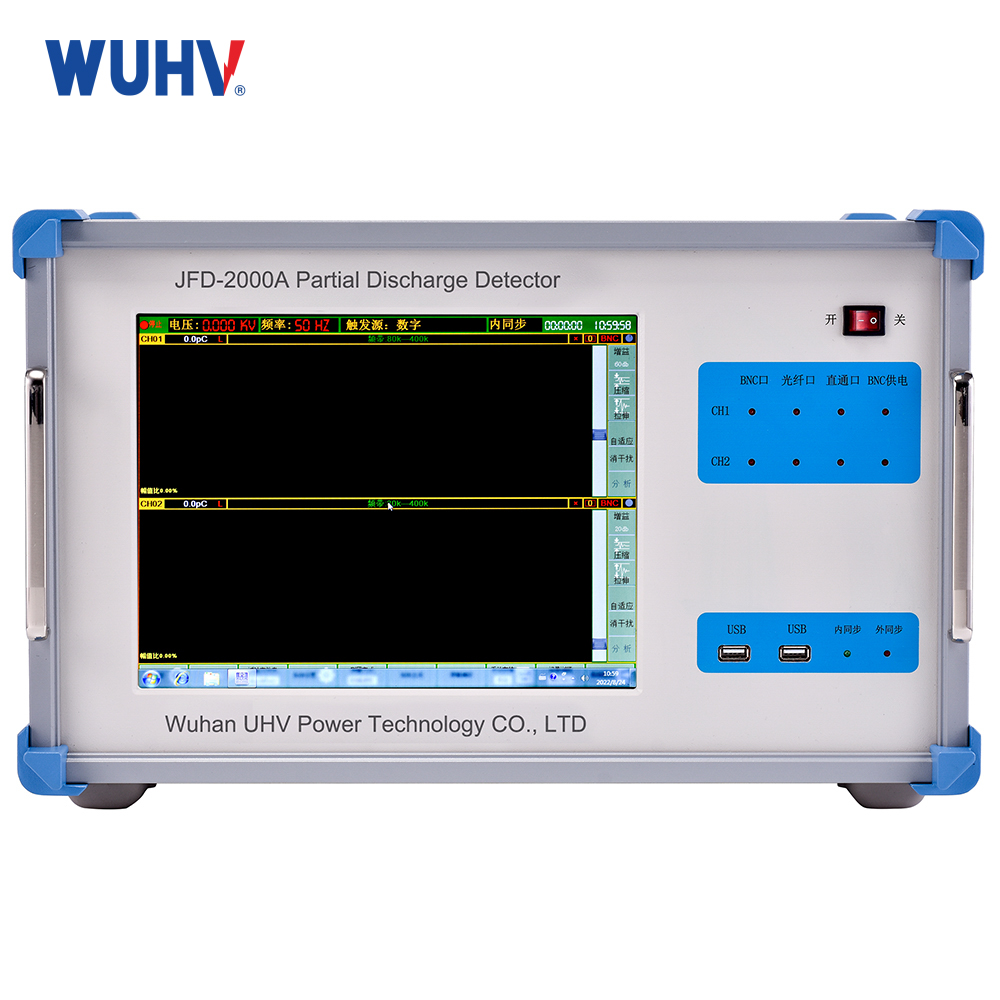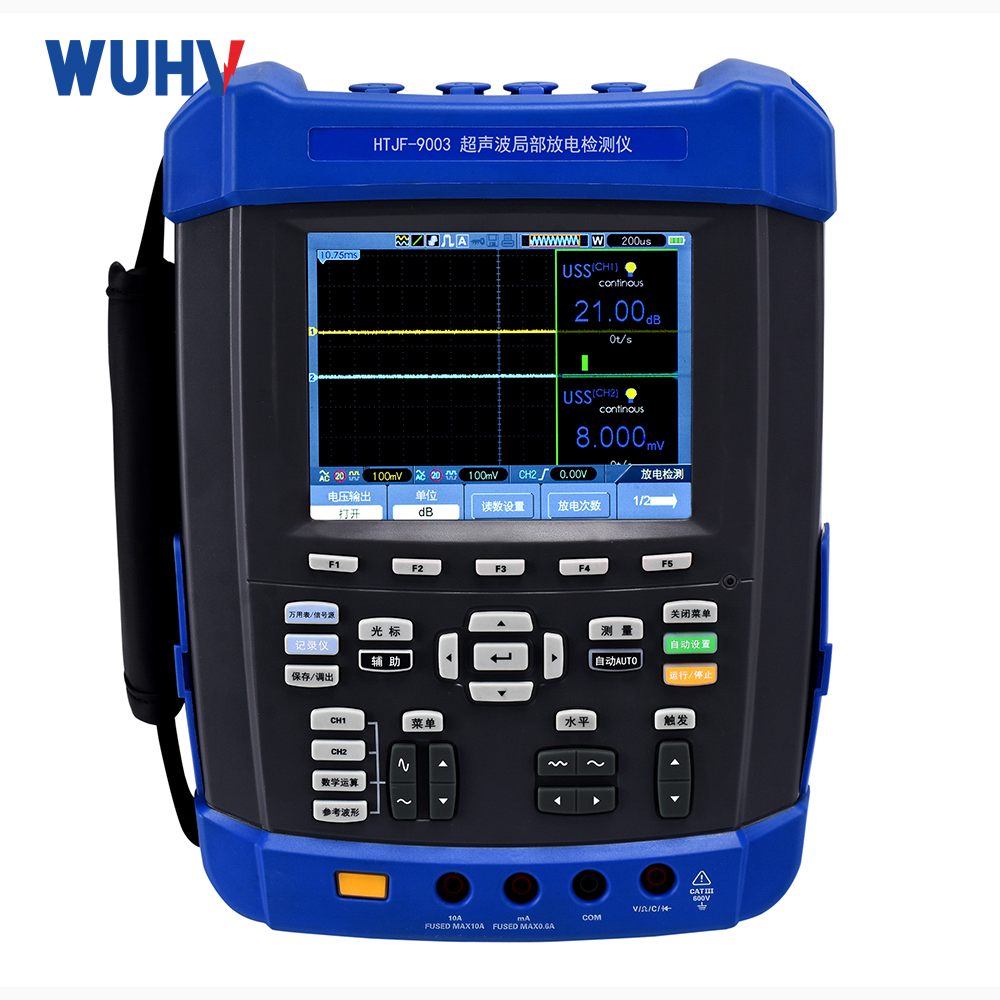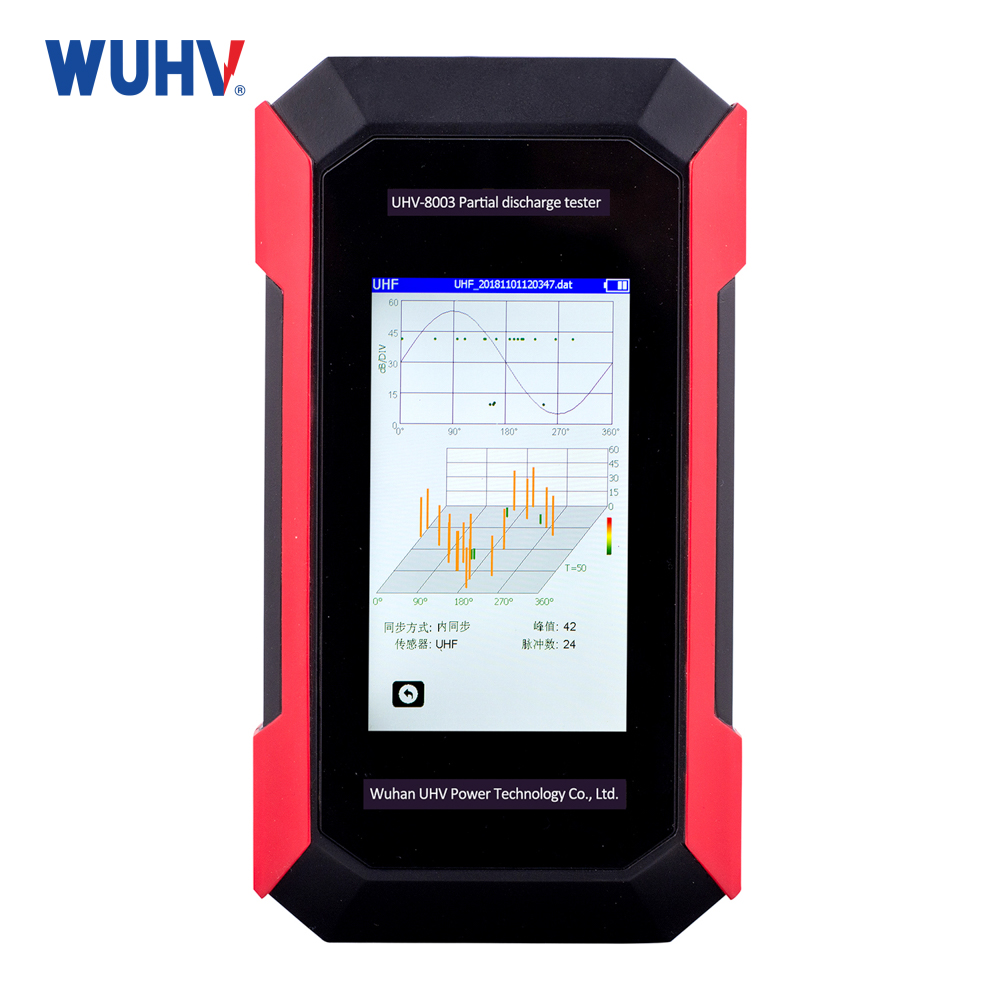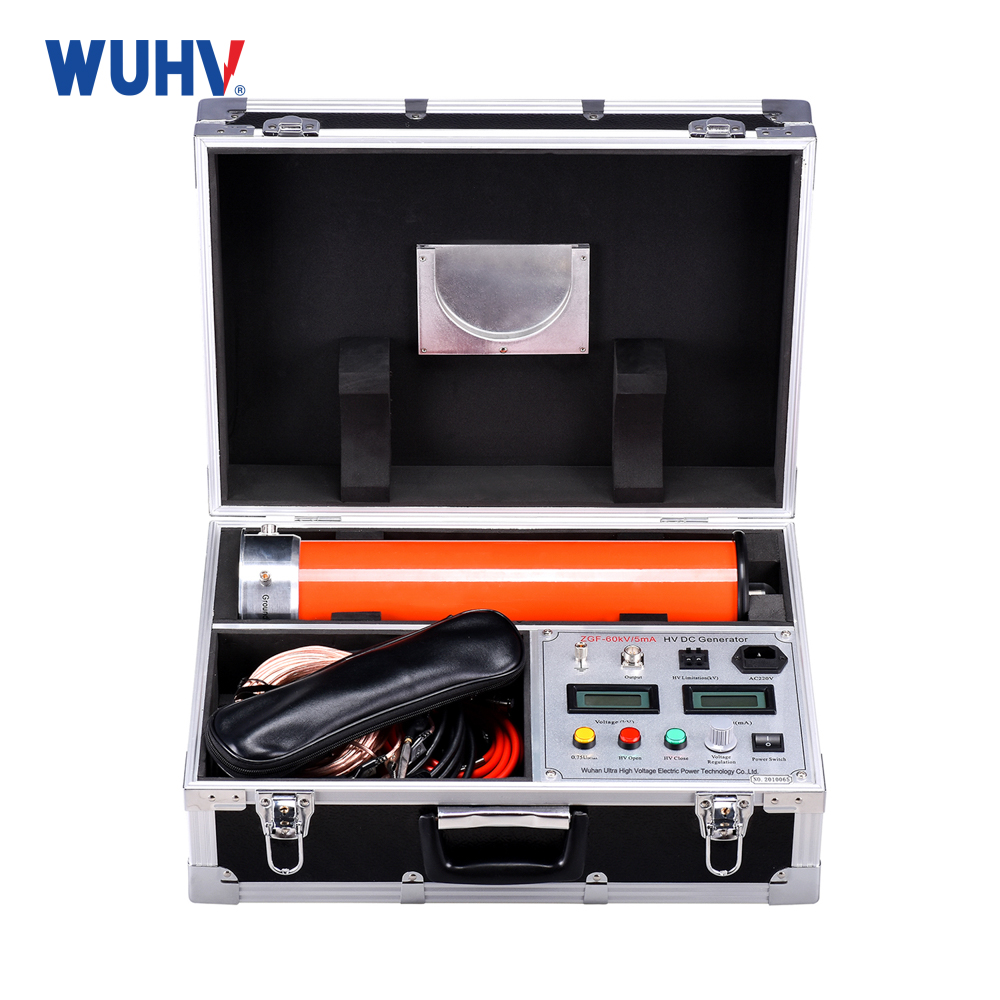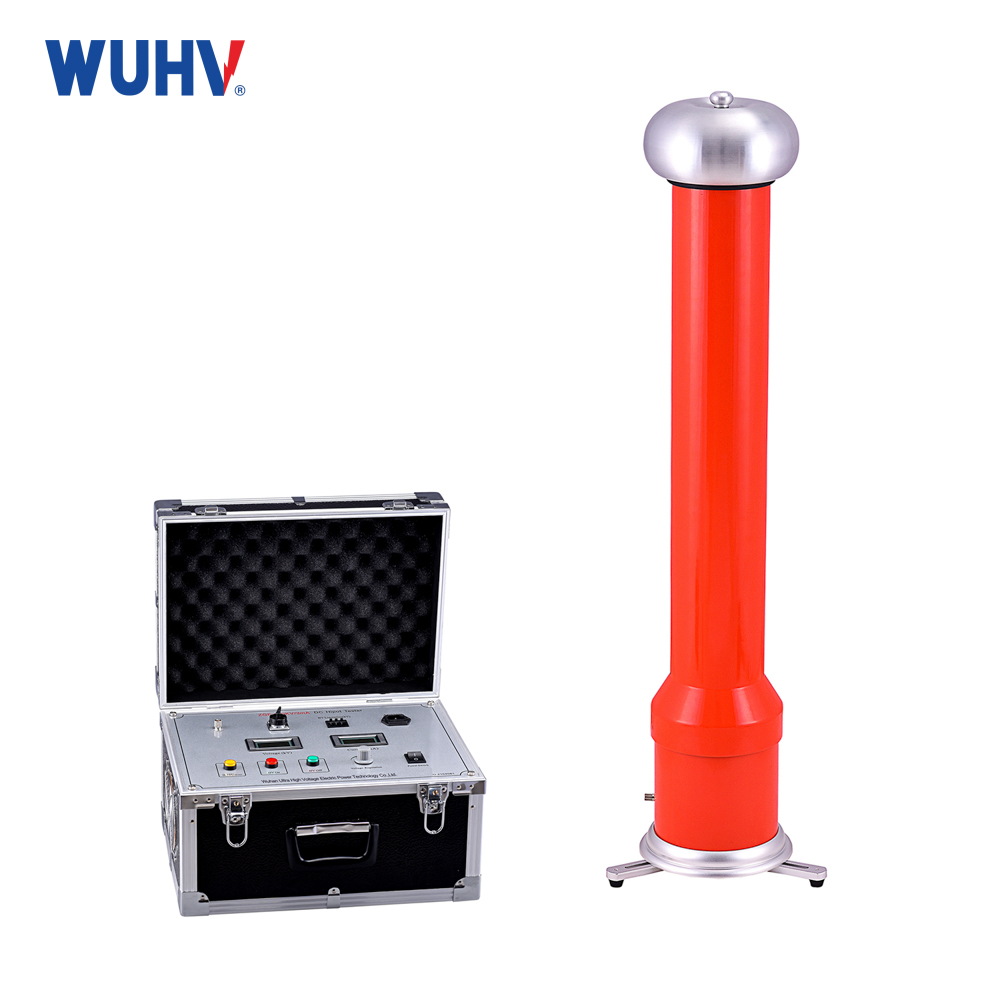A series resonant device is a system designed primarily for testing capacitive loads using reactive voltage and reactive power. It draws very little power from the mains, only enough to meet the losses of the testing circuit.
This series of resonance testing systems is designed for high-voltage testing of capacitance testing objects. For example, power cables, generators, bushings, capacitors, transformers, and SF6 gas insulated equipment.
Working Principle:
The practical series resonance testing system consists of a voltage regulator, excitation transformer, high-voltage variable reactor, and capacitor testing object. The voltage regulator is connected to the power supply through a main circuit breaker, and this component provides a variable voltage to the excitation transformer, allowing the output voltage to be adjusted to a value suitable for testing.
The excitation transformer provides necessary power to the high-voltage circuit composed of HV variable reactors and test objects. The excitation transformer also provides current isolation between the connected primary power supply and the high-voltage circuit in the secondary. These transformers have shielding functions to further isolate electronic noise conducted from the output circuit.
The high-voltage variable reactor is the core of the resonant circuit (the device is designed with a device to adjust its inductance to accurately compensate for the capacitance in the high-voltage circuit, thereby tuning the system to the resonant state), and this change in inductance is achieved by forming an air gap in the core of the reactor. The length of the air gap is adjusted by a motor drive mechanism controlled by a laptop computer through a control panel.
The capacitive load represents the combined effect of the test object, voltage divider, filtering capacitor (if used), and stray capacitance generated due to the test setup. To ensure the normal operation of the system in series resonance mode, a capacitive load is required.


